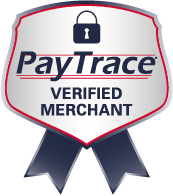Digital ad networks are more than just a channel for reaching a broad base of consumers. Because of the diversity of ad display possibilities, and the information gathered and shared across this network, targeting opportunities abound. In fact, digital ad display networks even enhance the quality of behavior targeting because they contribute so much data to marketing departments.
Targeting is critical to getting any value out of digital ad campaigns. When you’re working on a digital ad network, you have a massive potential audience you can reach. If you are content to simply display those ads to any regular Joe that stumbles onto an available ad space, you’re not marketing a brand so much as gambling wildly. There’s no way to know if Joe has any interest in your services.
In other words, you might be trying to sell feminine products to a 70-year-old male. Good luck making the sale.
Because digital ad networks offer such a large audience, marketers have the luxury of refining their campaigns and making sure ads are only presented to the most likely consumers of a brand. Even in terms of targeting, there are a lot of strategies you can take. Here are three of the best digital ad targeting strategies to increase your return-on-investment.
Demographics Build Off Market Research
Demographics is one of the oldest types of ad targeting, and it’s still applicable and useful on the digital front. Typically, demographic targeting is most valuable when you have market research on your typical consumer base. For example, your research might tell you that the vast majority of your consumer base is single women ages 18 to 30, predominantly middle and upper-class, and with at least some college experience.
All of these characteristics can be targeted online, cutting out Web traffic that wouldn’t really be relevant to your brand and its solutions. Consequently, you’re only paying to display your ad to the most likely buyers. This lets you stretch your budget and ultimately reach more prospects, and with higher conversion rates to boot.
Behavior Targeting Wields Data Feedback
Behavior targeting is enabled largely by the data accumulation of the Internet. Internet cookies, consumer profiles, Web histories and other data sets can be tracked and analyzed by digital ad networks, and then used to determine which ads are presented to what consumers. With behavior targeting, you can follow a past website visitor to other websites across that Internet, displaying ads that are highly relevant based on their past activity.
If you sell home tools, for example, and a consumer views a radial saw on your website before ultimately abandoning your site, this prospective purchase isn’t necessarily lost. You can retarget them through behavior targeting strategies, displaying ads for radial saws on other websites, or even an ad for the exact saw the consumer considered but didn’t purchase. Research has found that behavior targeting can be very effective when you target the most telling consumer behaviors.
Mobile Devices Enable Location Targeting
Local businesses finally have a great resource for driving in-store traffic from online venues. Thanks to smartphones and tables, which are outfitted with location services, brands can choose to display ads to consumers within a certain distance of a physical store. They can also craft custom local ads displayed in certain cities or regions to create the appearance of greater personalization. And other tools, such as click-to-call buttons in ads or buttons to call up directions to a store, are also possible through this technology.
How you target your consumers depends on the type of business you run, your consumer base, your marketing goals and other variables. Contact DBC Digital to learn more about how you can reach your consumer base better through digital ad networks.
Greg Sherwood is CEO of DBC Digital, a marketing agency based in Denver, Colorado. With over 30 years of marketing experience with traditional and inbound (internet) marketing, Greg helps mid-sized businesses get a better return on their marketing dollars.
You can reach Greg at (303) 357-5757 or at dbc@dbcdigital.com


